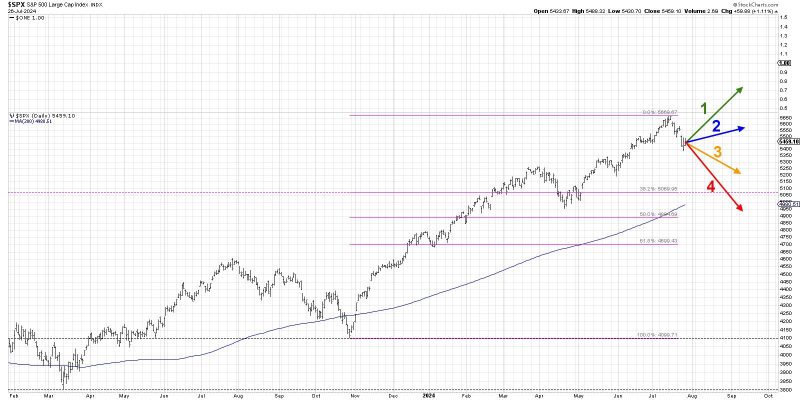The S&P 500, a prominent index that tracks the performance of 500 large-cap stocks listed on the US stock exchanges, has been a key barometer of the health of the stock market and the broader economy. In recent years, the index has seen record-breaking highs, prompting many investors to wonder whether it will break the significant milestone of 5000 by September.
Several factors are influencing the performance of the S&P 500 and could potentially propel it towards the 5000 mark. Firstly, the strong economic recovery following the disruptions caused by the COVID-19 pandemic has been a major driver of the index’s performance. With businesses reopening, consumer spending bouncing back, and job growth on the rise, corporate profits are expected to continue to increase, supporting stock prices and potentially pushing the S&P 500 higher.
Moreover, central bank policies, particularly the US Federal Reserve, play a crucial role in shaping market sentiment and liquidity conditions. The Fed’s accommodative stance, with near-zero interest rates and ongoing asset purchases, has provided a supportive backdrop for equities, pushing investors towards riskier assets like stocks. If the Fed continues to maintain its current stance in the coming months, it could offer further tailwinds to the S&P 500 as investors seek higher returns in a low-interest-rate environment.
In addition, the rapid pace of technological innovation and digital transformation is driving the outperformance of select sectors within the S&P 500, such as technology, communication services, and healthcare. Companies at the forefront of these trends have seen their valuations soar, contributing to the index’s overall growth. If these sectors continue to deliver strong earnings growth and innovation, they could provide a solid foundation for the S&P 500 to reach new highs.
On the other hand, several risks and challenges could potentially hinder the S&P 500’s ascent to 5000 by September. One key concern is the resurgence of COVID-19 cases driven by new variants of the virus. A significant increase in infections could lead to renewed restrictions, supply chain disruptions, and economic uncertainty, all of which could weigh on stock prices and dampen investor sentiment.
Geopolitical tensions, including trade disputes, political instability, and conflicts, also present risks to the global economy and financial markets. Any escalation in these tensions could lead to market volatility, prompting investors to adopt a more cautious approach and potentially limiting the upside potential of the S&P 500.
Furthermore, market valuations are another point of contention among investors and analysts. Some argue that stock prices are inflated and disconnected from underlying fundamentals, raising concerns about a possible market correction or pullback. If earnings growth fails to meet expectations or if market sentiment shifts towards a more risk-averse stance, the S&P 500 could face headwinds in its quest to reach 5000 by September.
In conclusion, while the S&P 500’s journey to 5000 by September is not guaranteed, several factors are aligning in its favor, including a strong economic recovery, accommodative central bank policies, and sector-specific tailwinds. However, risks stemming from the ongoing pandemic, geopolitical tensions, and lofty valuations may pose challenges along the way. As investors navigate these uncertainties, staying informed, diversifying portfolios, and maintaining a long-term perspective will be crucial in managing risk and capitalizing on opportunities in the dynamic world of investing.
